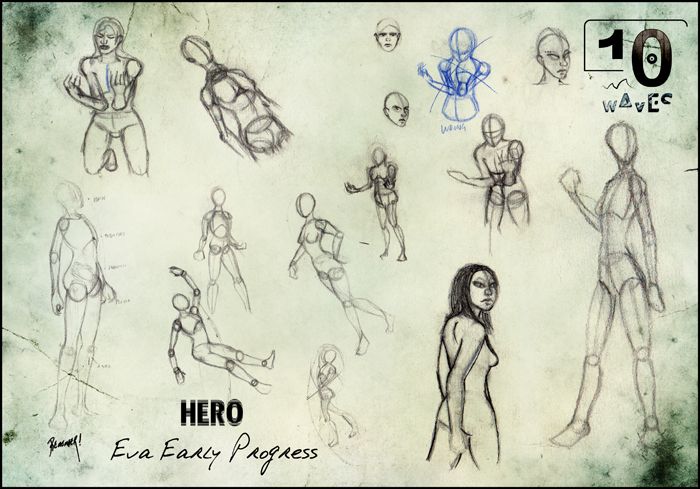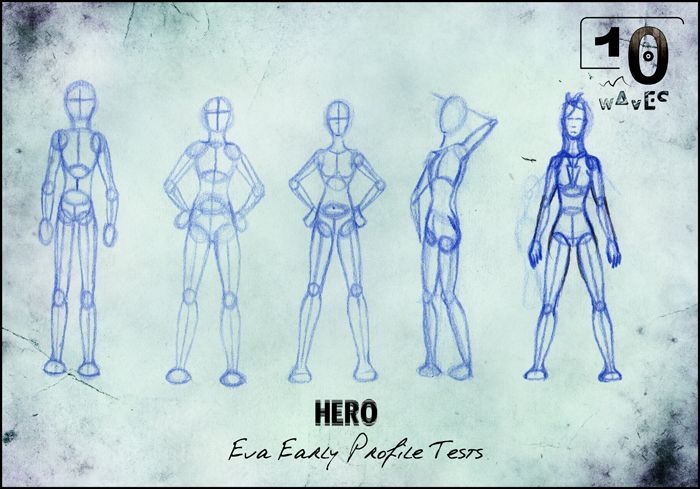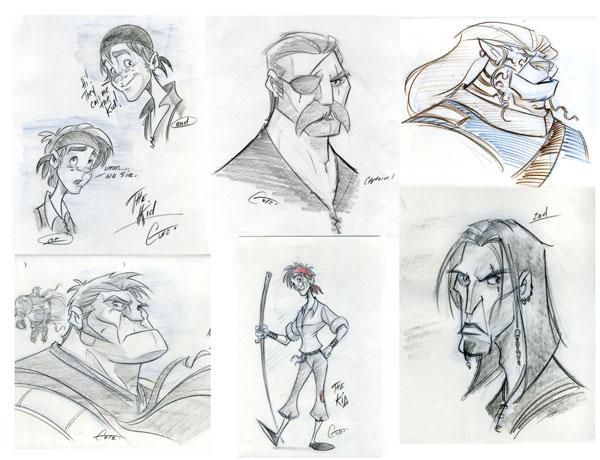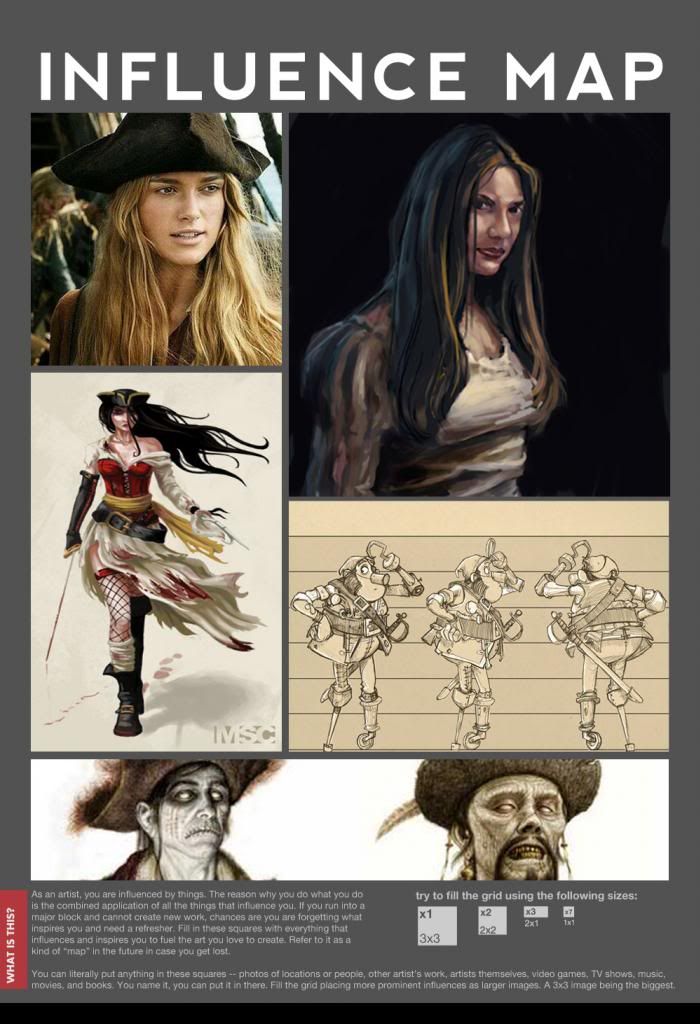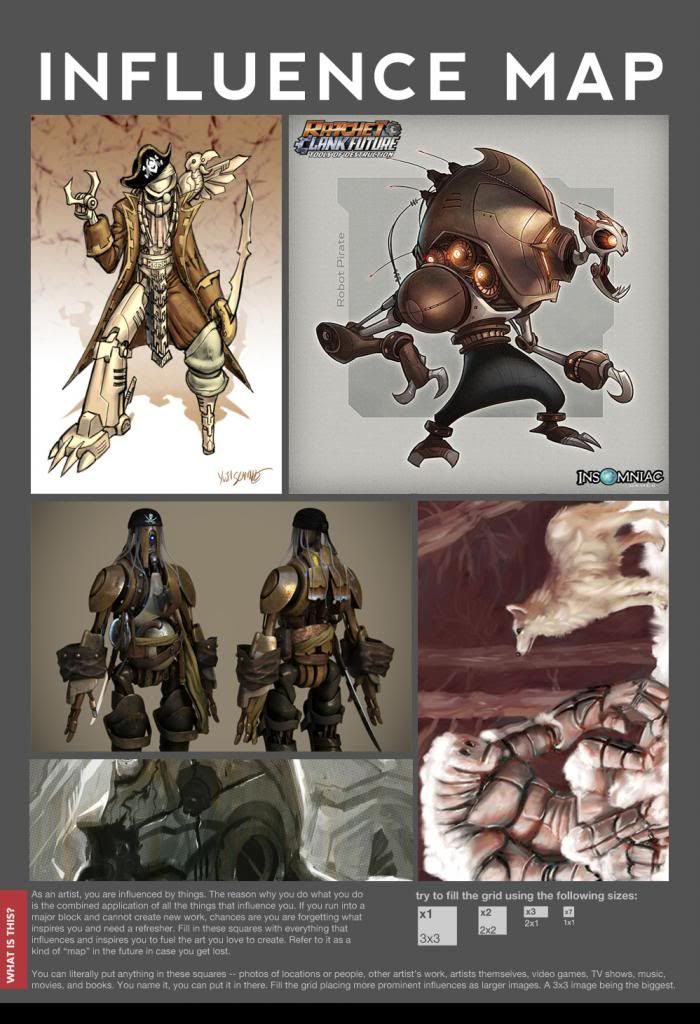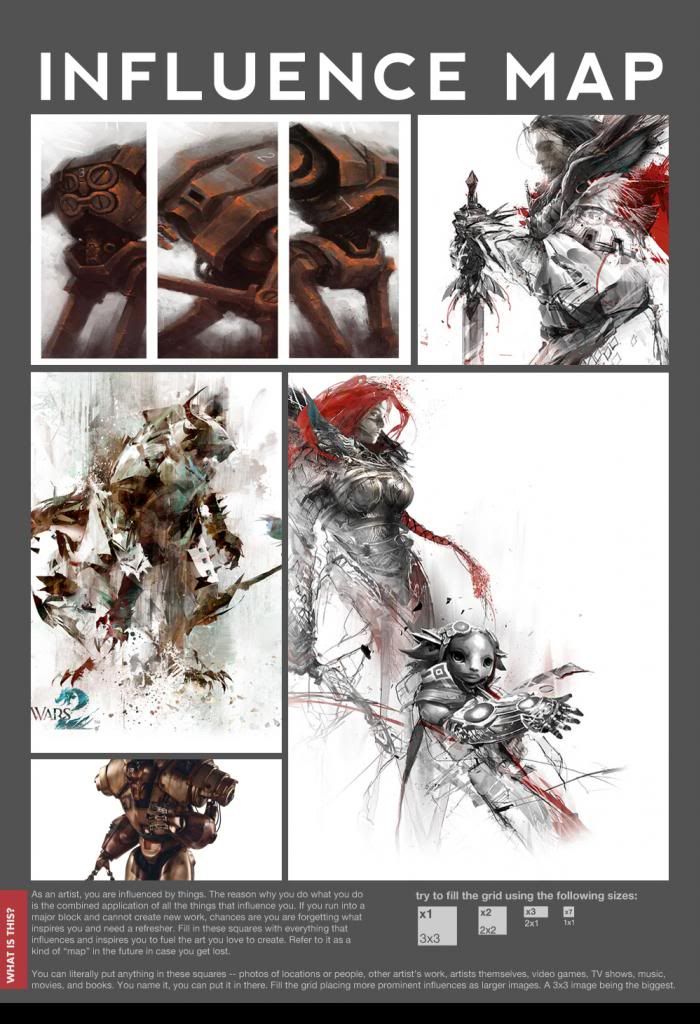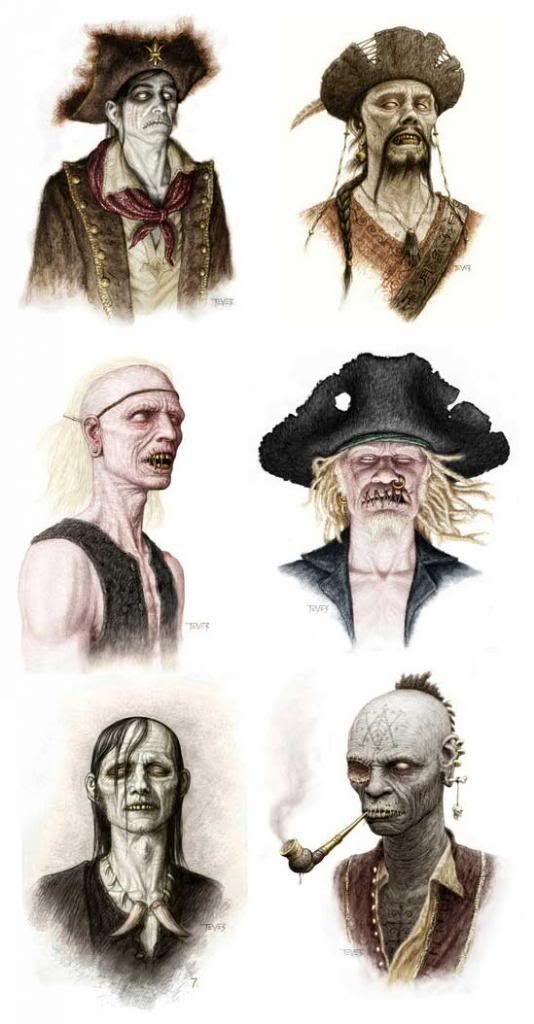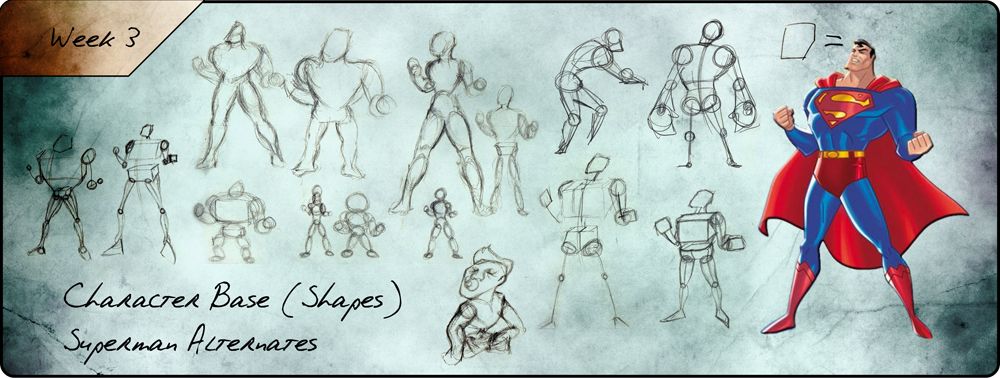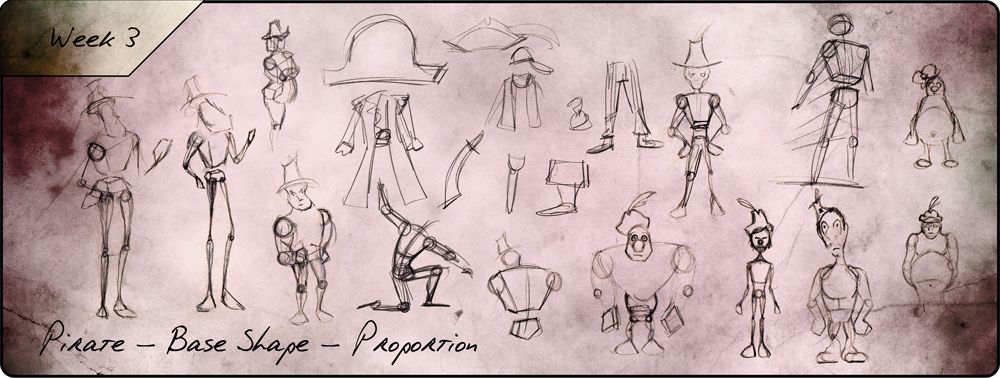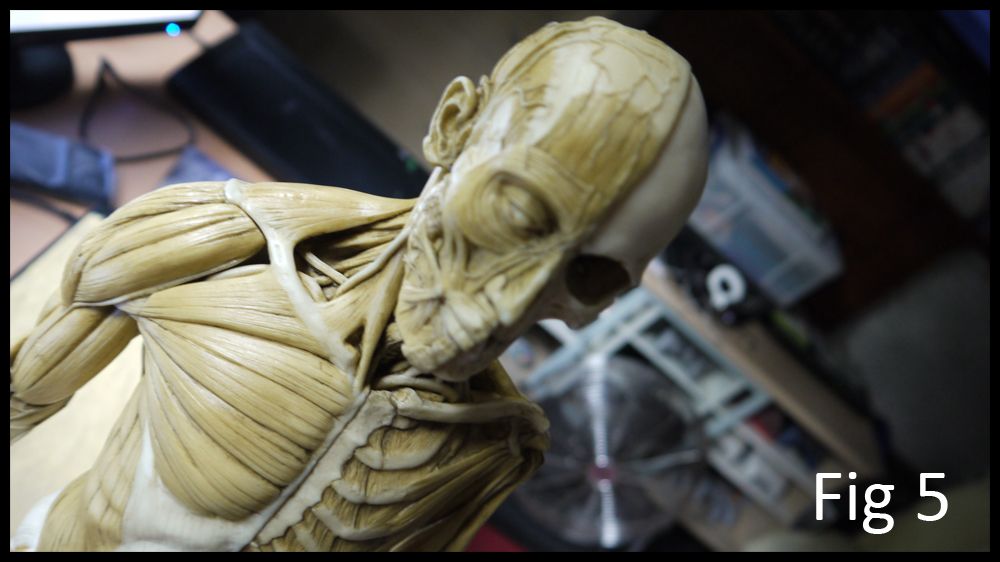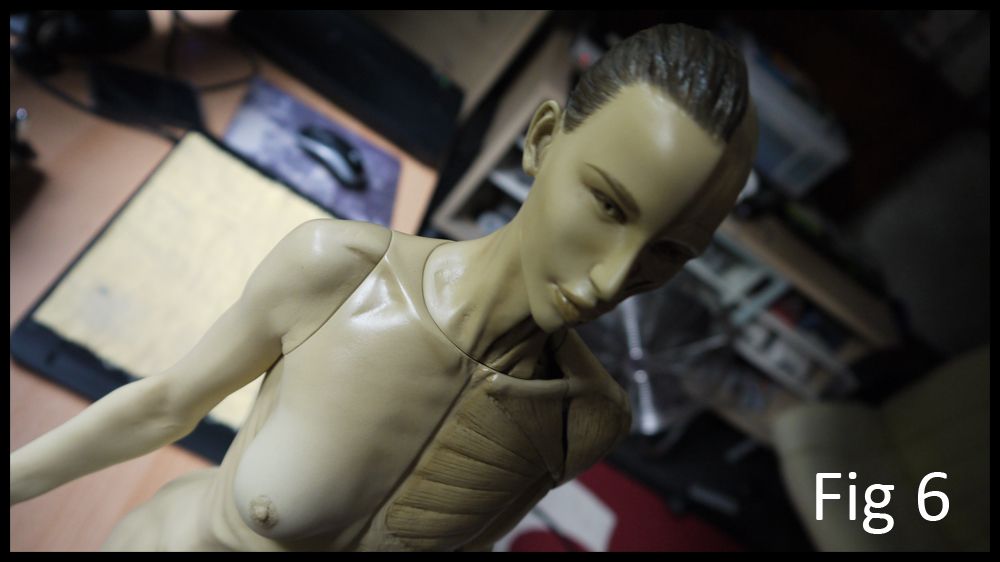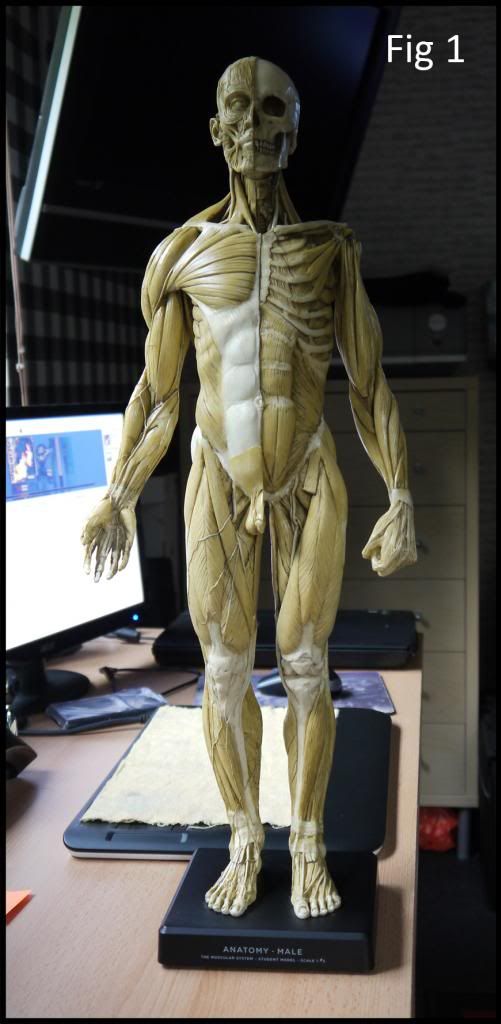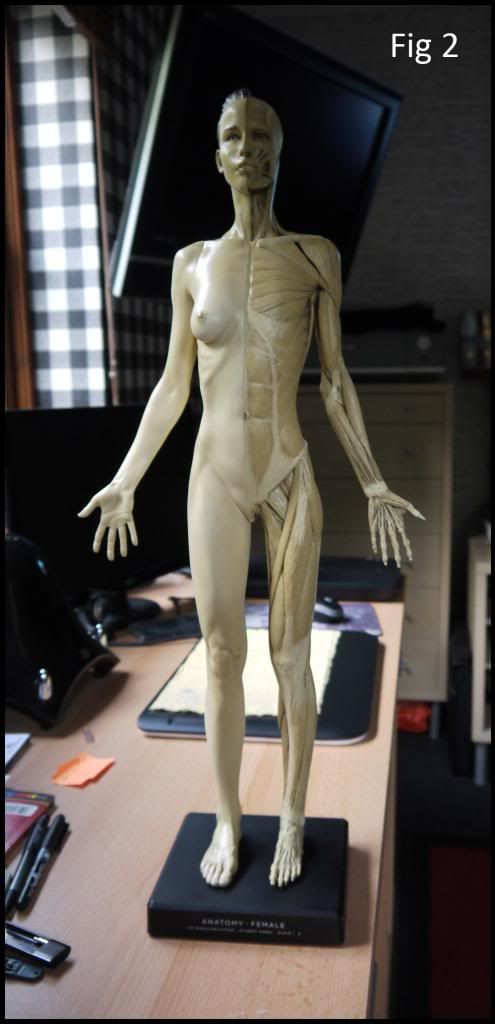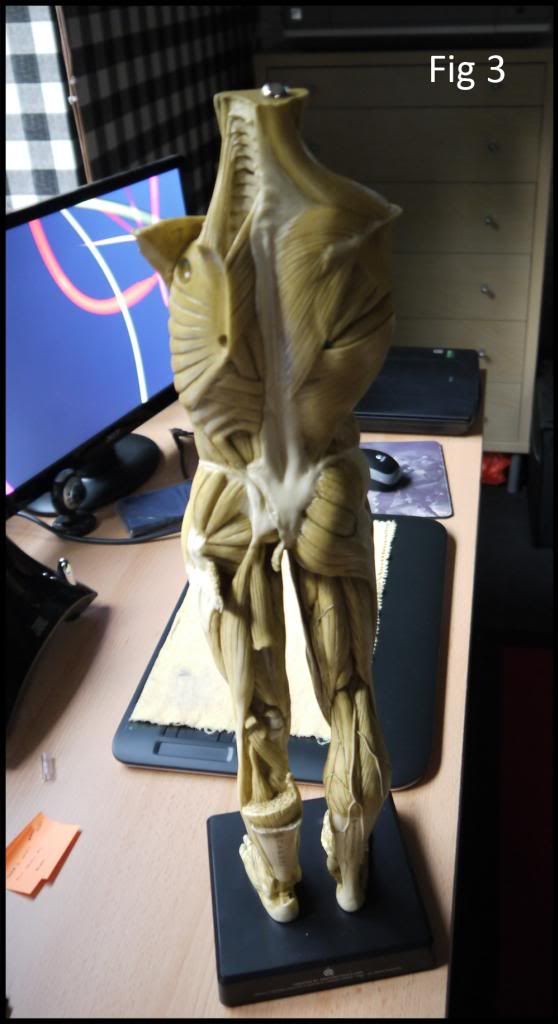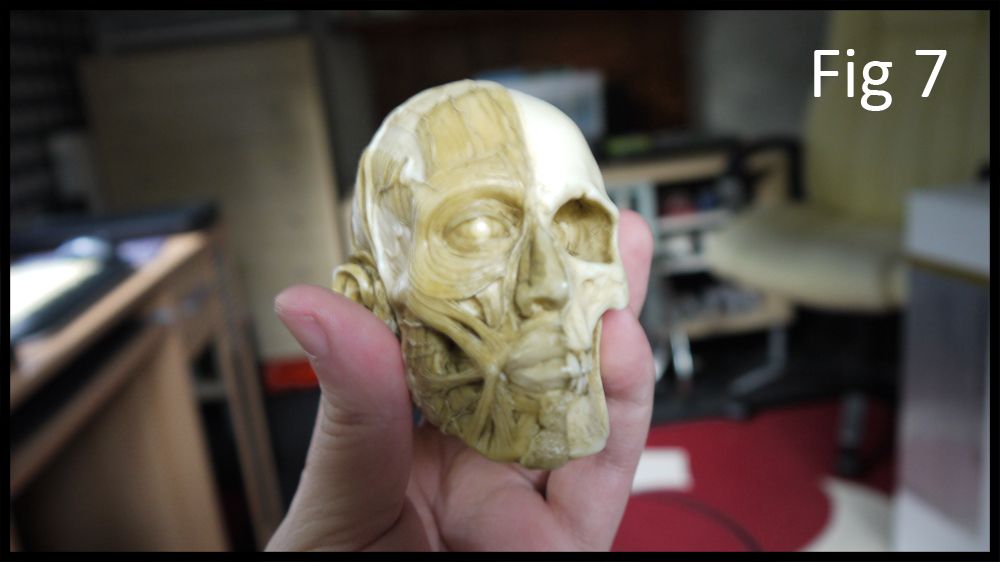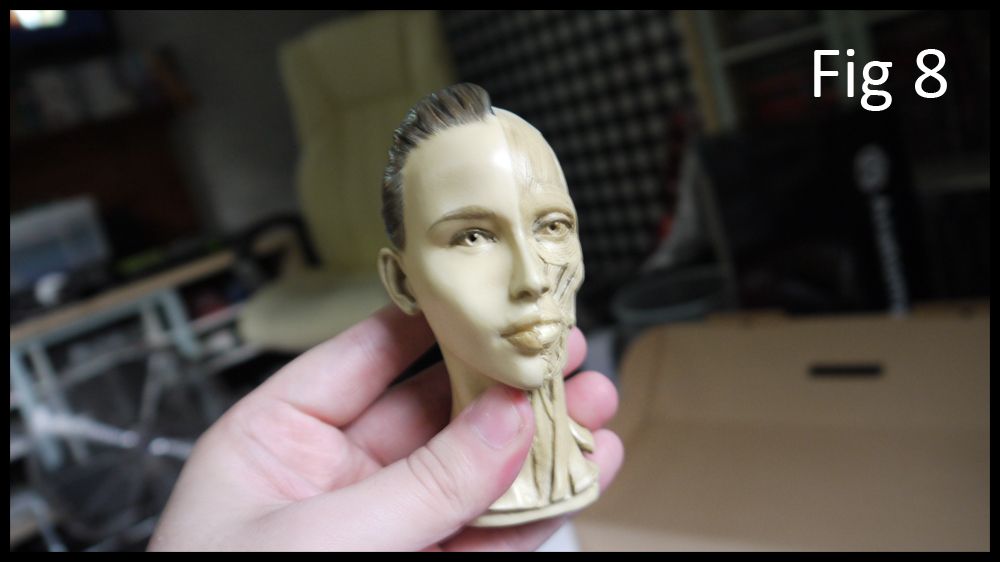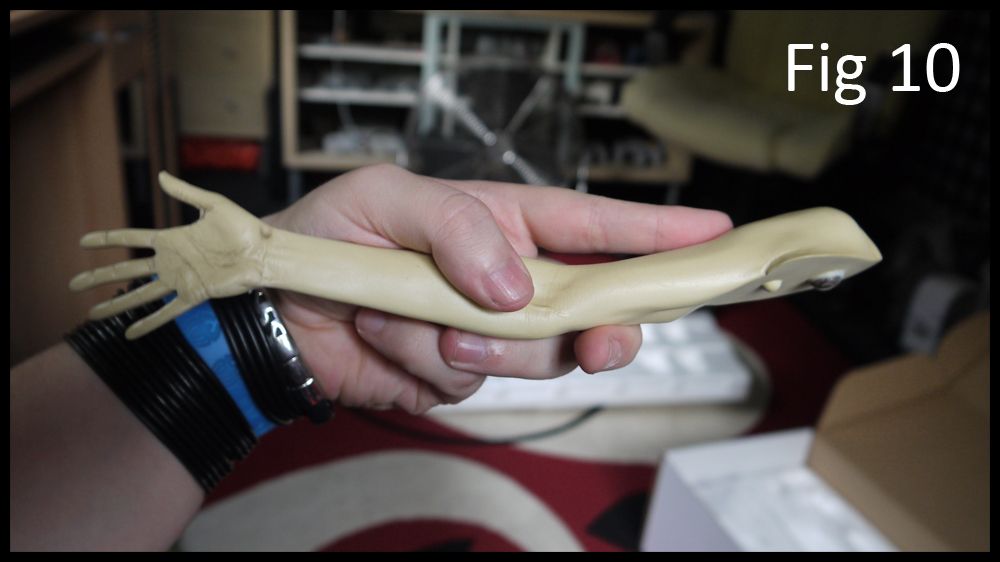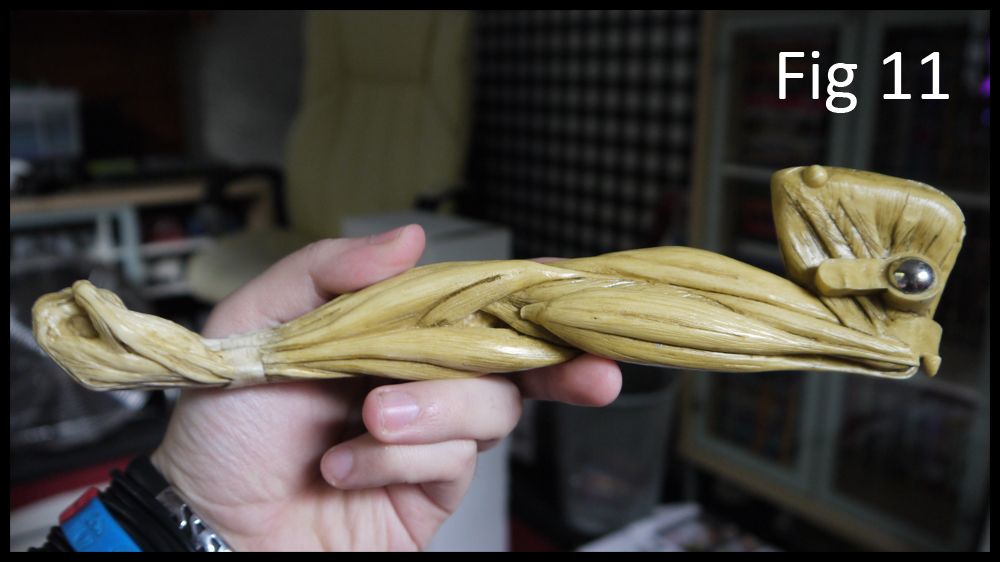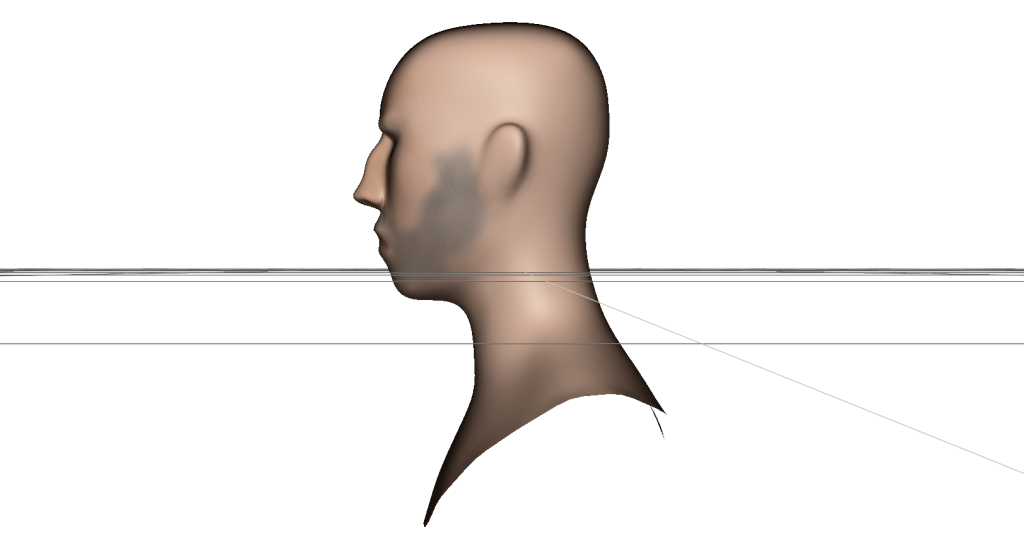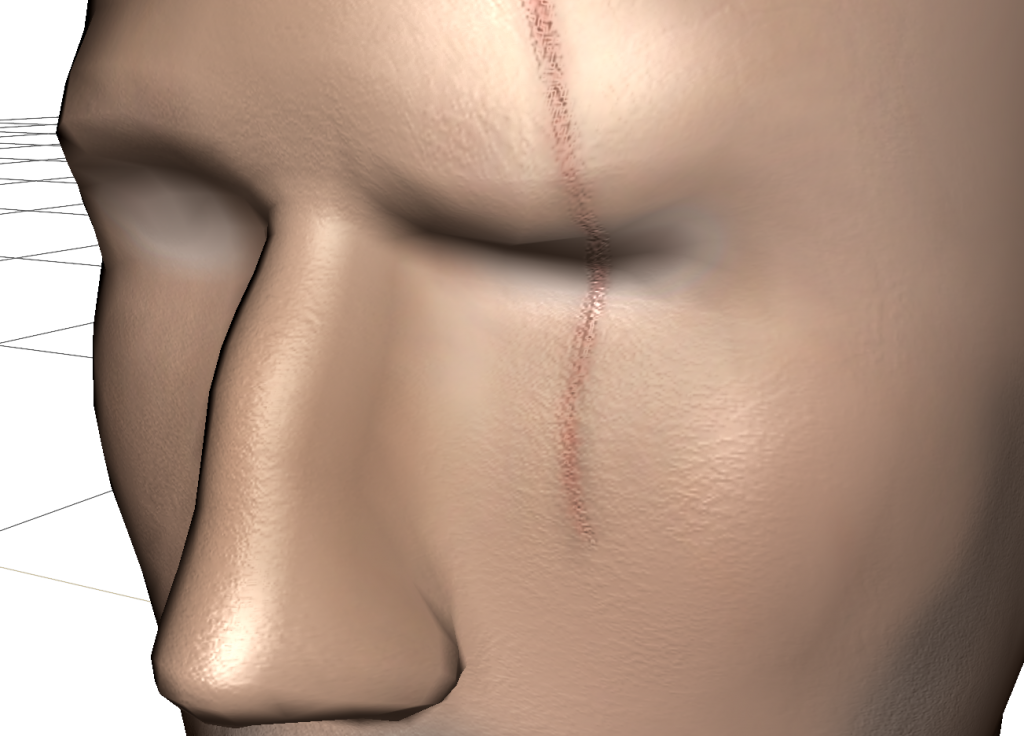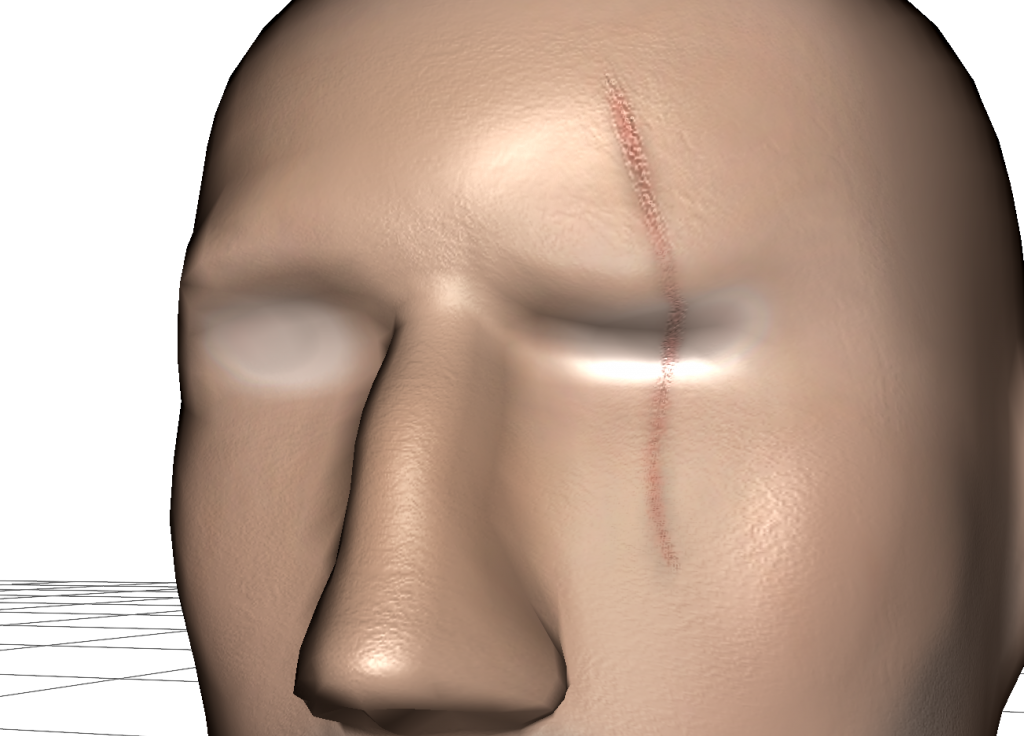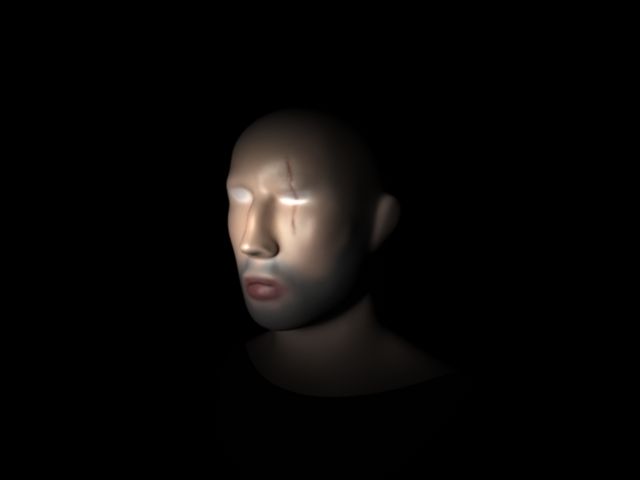Hello Everyone,
Just posting this as I usually do only in this case it is an incomplete complete... if that makes any sense at all. Basically this unit is longer then my usual 5 week preset consisting of a 12 week duration. It is because of this that there are now multiple posts for our 2 active projects (Narrative & Character).
So far we are on task with our Narrative project hitting the odd high note while being thrown the odd extra curve ball on occasion. For those of you that do not know our Narrative project is an animated short our character Unit runs in tangent with that unit but that is individual.
The image above shows my little time management sheet the ticks show that our pre-production is pretty much there with the odd little extra pending. Regardless we are on the early stages of production now having explored our idea further. It is my goal this week to establish the character motivation of Charles and demonstrate that to our Clients (Alan, etc).
Well that is weeks 1 - 5 complete, forgive the lack of the name Character here... I began it one way so it seems only fitting to finish it and introduce the character theme in the next board even though some tasks have already gone underway toward the character Unit. I'm a little nervous as things go ahead but hopefully everything goes according to plan...
We have most of our pre-production for Narrative complete leaving the Character side of things a little sparse but that is slowly being resolved... Like anything its about finding the right balance here and assigning the right amount of days to be thinking about something... Even writing something off after a while if you cant find a solution or figure out why its not working... (that applies particularly to Character).
Well let me welcome in weeks 6 - 10 as things move forward lets hope there isn't too much overlap after the next 5 weeks. Postmodernism begins to make its appearance towards the end of the board. The top is mainly based on Narrative with gradual slices set aside for Character. As we get towards the end we see more of character as render tasks begin to appear meaning there will be no actual further development time for Narrative.
I am a little dazed and confused, still kinda wondering how I got this far but some how I'm still standing... I must really want to make a statement lol. Part of me didn't think this was possible when I realised it was 3 briefs rolled into one 13 week period but I guess like anything its about careful planning and motivation.
Well I think I'm done with this little post, this is quite possibly the biggest time management post I have made yet.... sooo many images. There will be a third part for the final 2 weeks with possibly a week or so further development for character over Christmas break.
Catcha later people!
xXStItChXx
Monday, 29 October 2012
Unit 8: Character - "10 Waves" Rough Character Sketches - Evaline Alvilda
Hello Everyone,
I promised Justin I would play around this week and I did even though I don't have as much as I wanted. I focused on the hero of my story and found myself trying out more complex poses and studying form more then I thought I would. The advantage of doing this was I learnt a few new tricks and figured out a couple of design choices. The problem however is I didn't get to explore the robot factor too much much to my own sadness. That will be something I look into this week!
I did consider facial choices but didn't really finalise anything I just wanted to get a vibe for the form (especially since this past week was based on altering proportions. I did test this albeit briefly on one of the pages below. I'm a little disappointed that I didn't get more done I have no idea where the time went this week. Although I have been spending alot of time on completing our Maya exercises. Anyway I wont make excuses here, I have to really start pulling my finger out this week.
I did get a brief chance to study faces which began very rough and loose only to go back and fix them because they were alot worse. One thing I have learnt from doing all of these are my legs and arms are always the most time consuming aspect of anything. I will ask Justin this week if poses are key for our characters or if the basic front on images are what he requires of us. It could very well be that I have started doing this the difficult way round.
Well what I have figured out this week is to stop being so precious with things I really have to get out of this habit feeling the need to make everything work. In the end I think I used more time trying to fix some of the weaker things on these pages. I just have to get this going and be thinking more freely about my ideas. I will commit even more time on this Unit over the next week darting between this and our Charles model (development has to start this week).
Anyway I wont waffle further, I did quite a bit of thinking this week but now is the time to start getting more stuff down quicker. Ive got to stop being precious here, because at this point everything is up for debate. Hopefully tomorrow will give me more to think about as I delve into this concept further. At least I know the direction I'm going in with my theme sorted out and at least initially researched... Justin's Pirate props have also given me a few ideas that I will post up very soon :)
Catcha later!
xXStItChXx
I promised Justin I would play around this week and I did even though I don't have as much as I wanted. I focused on the hero of my story and found myself trying out more complex poses and studying form more then I thought I would. The advantage of doing this was I learnt a few new tricks and figured out a couple of design choices. The problem however is I didn't get to explore the robot factor too much much to my own sadness. That will be something I look into this week!
I did consider facial choices but didn't really finalise anything I just wanted to get a vibe for the form (especially since this past week was based on altering proportions. I did test this albeit briefly on one of the pages below. I'm a little disappointed that I didn't get more done I have no idea where the time went this week. Although I have been spending alot of time on completing our Maya exercises. Anyway I wont make excuses here, I have to really start pulling my finger out this week.
I did get a brief chance to study faces which began very rough and loose only to go back and fix them because they were alot worse. One thing I have learnt from doing all of these are my legs and arms are always the most time consuming aspect of anything. I will ask Justin this week if poses are key for our characters or if the basic front on images are what he requires of us. It could very well be that I have started doing this the difficult way round.
Well what I have figured out this week is to stop being so precious with things I really have to get out of this habit feeling the need to make everything work. In the end I think I used more time trying to fix some of the weaker things on these pages. I just have to get this going and be thinking more freely about my ideas. I will commit even more time on this Unit over the next week darting between this and our Charles model (development has to start this week).
Anyway I wont waffle further, I did quite a bit of thinking this week but now is the time to start getting more stuff down quicker. Ive got to stop being precious here, because at this point everything is up for debate. Hopefully tomorrow will give me more to think about as I delve into this concept further. At least I know the direction I'm going in with my theme sorted out and at least initially researched... Justin's Pirate props have also given me a few ideas that I will post up very soon :)
Catcha later!
xXStItChXx
Wednesday, 24 October 2012
Unit 8: Character - Influence Maps - Pirate/Robot/Style
Hey Everyone,
Influence Map time, this has been somewhat debated but what I ended up settling on was the atypical pirates of the Caribbean but then I re-assessed and looked into some other stuff including zombie pirates. However there are a number of pirate sketches that I found which certainly give me more of a footing when it comes to visualising the basics of the characters. (see below)
Anyway the first (pirates) influence map is crude but it gives me some basics to start looking at as I said in my first post I'm looking for serious not a kids world... this story is going to be very dark if I can help it... this year is about letting my darkness shine out. I guess it couldn't be at a better time.
Before you say it yes I know it is predominately female characters but that's because my lead is female with Robot parts. My male lead (also my antagonist) is a robot I may put on some human components but mostly he is Robotic so that covers most if not all of the second influence map. My sidekick is also a dog keeping the female lead in check of her humanity.
Okay this side is going to be my male lead mostly robotic almost entirely devoid of humanity. I kept the dog image in there because it showed a contrast between animal and machine. In my case the dog is against his robotic master trying to protect the heroine's humanity from the savage monster who was once her love. Its a little cheesy maybe but what can I say we were told to come up with something basic and I really wanted to exercise my darkness...
Last but not least is the style I am aiming for, I wish to be strategic with my final concept art of these characters. I don't just want line art I want something partially painted and partially sketch very much like Guild Wars 2 concept art. I am setting myself a challenge in this regard because I have loved this style for so long but never done anything to understand how its done... Now I will learn... You also have to love anything done with blotches... I don't want comic art style concept.
Last but not least I put this in for personal reference to myself I didn't see a point of making an influence map just for an individual picture. This was just some reference to give me some pirate themed costumes and obviously give me advice on how people make them creepy. These pictures are zombie pirates... more importantly they are painted - shock horror there is no line art. There won't be on mine either I'm aiming for something realish here with my own style of course...
Well I think that concludes my initial research, when I get stuck I don't doubt for a second that I will be out surfing for more and more reference. Until then I have my ground level now lets see how far up the ladder I can go with this.
Catcha later all!
Over & Out,
xXStItChXx
Influence Map time, this has been somewhat debated but what I ended up settling on was the atypical pirates of the Caribbean but then I re-assessed and looked into some other stuff including zombie pirates. However there are a number of pirate sketches that I found which certainly give me more of a footing when it comes to visualising the basics of the characters. (see below)
Anyway the first (pirates) influence map is crude but it gives me some basics to start looking at as I said in my first post I'm looking for serious not a kids world... this story is going to be very dark if I can help it... this year is about letting my darkness shine out. I guess it couldn't be at a better time.
Before you say it yes I know it is predominately female characters but that's because my lead is female with Robot parts. My male lead (also my antagonist) is a robot I may put on some human components but mostly he is Robotic so that covers most if not all of the second influence map. My sidekick is also a dog keeping the female lead in check of her humanity.
Okay this side is going to be my male lead mostly robotic almost entirely devoid of humanity. I kept the dog image in there because it showed a contrast between animal and machine. In my case the dog is against his robotic master trying to protect the heroine's humanity from the savage monster who was once her love. Its a little cheesy maybe but what can I say we were told to come up with something basic and I really wanted to exercise my darkness...
Last but not least is the style I am aiming for, I wish to be strategic with my final concept art of these characters. I don't just want line art I want something partially painted and partially sketch very much like Guild Wars 2 concept art. I am setting myself a challenge in this regard because I have loved this style for so long but never done anything to understand how its done... Now I will learn... You also have to love anything done with blotches... I don't want comic art style concept.
Last but not least I put this in for personal reference to myself I didn't see a point of making an influence map just for an individual picture. This was just some reference to give me some pirate themed costumes and obviously give me advice on how people make them creepy. These pictures are zombie pirates... more importantly they are painted - shock horror there is no line art. There won't be on mine either I'm aiming for something realish here with my own style of course...
Well I think that concludes my initial research, when I get stuck I don't doubt for a second that I will be out surfing for more and more reference. Until then I have my ground level now lets see how far up the ladder I can go with this.
Catcha later all!
Over & Out,
xXStItChXx
Unit 8: Character - Week 1-3 - Sketches
Hey Everyone,
Week 1 with Justin
had us also knock up some quick drawings based entirely on random sketching at
what was a quick rate for me. I found it
rather challenging, not being an overly fast drawer myself besides being
told to do something and produce results in that second certainly isn't an easy
thing... well not for me.
I only had 2 but the
first pretty much dumbfounded me until someone gave me a pointer on it (Week 1 class sketches are below). I
had a baby traffic warden and then an un-dead
Goth, the second I didn't get into much because the traffic warden took so
long to isolate... besides I was already
thinking of my design choices for the robot theme for my character design particularly as well as actively thinking
about pirates... some of which are on the pages where my drawings are
located. Not that I have any experience drawing pirates or robots lol.
Week 2 sadly I was absent - personal issues but I wont bore with those. I was rather gutted that I didn't attend though, its quite cool seeing how all of this works and how professionals work in this industry... I had no idea but now I know...somewhat.
Week 3 which just passed was very insightful, firstly the loss of what Justin referred to as "Sausage Limbs" using wavy lines to connect joints I have been doing that for ages so its nice to get out of it if its a nasty habit. What the lesson broke down to was finding the basic shapes in popular characters (I got superman) we were therefore asked to play with the proportions of our chosen character to create a different type of character (See my Superman Alternates below).
I found it very interesting thinking of characters this way as he said its before detail so all you are doing is fine tweaking your foundation to make something truly unique. You are essentially making your character less generic and more stylised... A feat we should all be aiming for if we wish to make our own particular make with a particular style of character.
I kept the skull shape which Justin knocked up basically narrowing down Superman's skull to a cube in perspective. Just like that using a simple primitive you know how a character is constructed... This is key before doing the detail to any character... knowing the basic building blocks of a character.
Last but not least Justin gave us a character to do further tests on, something I was kind of slow on having never really researched pirates. Mine ended up coming out a bit cow boyish until Justin provided me some drawn props (Thanks Justin). Anyway what was kind of Ironic getting a pirate was that that's actually one of my character styles (Robot Pirates)... All it showed me was I'm not ready but now I know it so now I'm going to fix it!
I will dedicate an evening to it over the weekend and hopefully knock out a few alternate ideas and get some proportion decisions made with a couple of little character head alts and some costume exploration. That's the goal here really... I might even begin tomorrow evening just to get a head start.
Well that concludes this little post on Weeks 1-3 of our lessons of character design with Justin, I will rectify my prioritisation issues (namely share myself between Narrative & Character evenly). They are both important and Characters are something I really wish to get good at... for my own personal shellfish reasons :P
Take care all!
xXStItChXx
Week 2 sadly I was absent - personal issues but I wont bore with those. I was rather gutted that I didn't attend though, its quite cool seeing how all of this works and how professionals work in this industry... I had no idea but now I know...somewhat.
Week 3 which just passed was very insightful, firstly the loss of what Justin referred to as "Sausage Limbs" using wavy lines to connect joints I have been doing that for ages so its nice to get out of it if its a nasty habit. What the lesson broke down to was finding the basic shapes in popular characters (I got superman) we were therefore asked to play with the proportions of our chosen character to create a different type of character (See my Superman Alternates below).
I found it very interesting thinking of characters this way as he said its before detail so all you are doing is fine tweaking your foundation to make something truly unique. You are essentially making your character less generic and more stylised... A feat we should all be aiming for if we wish to make our own particular make with a particular style of character.
I kept the skull shape which Justin knocked up basically narrowing down Superman's skull to a cube in perspective. Just like that using a simple primitive you know how a character is constructed... This is key before doing the detail to any character... knowing the basic building blocks of a character.
Last but not least Justin gave us a character to do further tests on, something I was kind of slow on having never really researched pirates. Mine ended up coming out a bit cow boyish until Justin provided me some drawn props (Thanks Justin). Anyway what was kind of Ironic getting a pirate was that that's actually one of my character styles (Robot Pirates)... All it showed me was I'm not ready but now I know it so now I'm going to fix it!
I will dedicate an evening to it over the weekend and hopefully knock out a few alternate ideas and get some proportion decisions made with a couple of little character head alts and some costume exploration. That's the goal here really... I might even begin tomorrow evening just to get a head start.
Well that concludes this little post on Weeks 1-3 of our lessons of character design with Justin, I will rectify my prioritisation issues (namely share myself between Narrative & Character evenly). They are both important and Characters are something I really wish to get good at... for my own personal shellfish reasons :P
Take care all!
xXStItChXx
Unit 8: Character - Anatomy Figures
Hello Everyone,
I was going to post this up yesterday but I may have mentioned that my power was yanked yesterday from the minute I got in more or less... And thus this and all posts including what extra work flow I did have in me was suspended indefinitely. Let us not dwell on things we have no power over, I have a few posts to get through on here tonight so I hope your ready to digest!! On a starting note please take a gander and Fig 5 & 6 :)
This post is about some anatomical figures which I ordered (figs below) from the states a few weeks back, when I heard we had no more life class I wanted to give myself a permanent reference for all future characters (not just pictures in a book but dimensional). For those of you that do not know about anatomytools.com I figured I would just mention it on here (its where I bought them from).
They basically have removable sections and show various layers of the human anatomy. They were mentioned in a Zbrush book I purchased some time back, which more or less would not shut up about the importance of having a physical reference in your artist studio (in my case my living room). The models freaked out my mother a little but what can I say sacrifices have to be made :)
There are sections which can be removed from the model to allow the viewer to explore them more closely the most important of which is the head... Still hands can be tricky too :) - See figs 7-12 below...
Sadly the only removable sections are shown above but to be honest for what they are I'm glad you could deconstruct it to this degree. I expect to be a master of hands and heads some day very soon and with this I should be able to explore anatomy for our character studies (Hey Justin!).
The models were a bit of a feel good purchase I made a few weeks back, and now that I have them I'm glad there here because I'm going to be paying particular focus to what I can create for the character unit... I'm a little scared but hopefully I will glean something epic from this...
Well I hope people who did check out this post have enjoyed it I'm now off to post up a load of sketches from Justin's class this week... I will then be getting down to some character sketches before Maya and eventually.... Bed
Take it easy!!
xXStItChXx
I was going to post this up yesterday but I may have mentioned that my power was yanked yesterday from the minute I got in more or less... And thus this and all posts including what extra work flow I did have in me was suspended indefinitely. Let us not dwell on things we have no power over, I have a few posts to get through on here tonight so I hope your ready to digest!! On a starting note please take a gander and Fig 5 & 6 :)
This post is about some anatomical figures which I ordered (figs below) from the states a few weeks back, when I heard we had no more life class I wanted to give myself a permanent reference for all future characters (not just pictures in a book but dimensional). For those of you that do not know about anatomytools.com I figured I would just mention it on here (its where I bought them from).
They basically have removable sections and show various layers of the human anatomy. They were mentioned in a Zbrush book I purchased some time back, which more or less would not shut up about the importance of having a physical reference in your artist studio (in my case my living room). The models freaked out my mother a little but what can I say sacrifices have to be made :)
There are sections which can be removed from the model to allow the viewer to explore them more closely the most important of which is the head... Still hands can be tricky too :) - See figs 7-12 below...
Sadly the only removable sections are shown above but to be honest for what they are I'm glad you could deconstruct it to this degree. I expect to be a master of hands and heads some day very soon and with this I should be able to explore anatomy for our character studies (Hey Justin!).
The models were a bit of a feel good purchase I made a few weeks back, and now that I have them I'm glad there here because I'm going to be paying particular focus to what I can create for the character unit... I'm a little scared but hopefully I will glean something epic from this...
Well I hope people who did check out this post have enjoyed it I'm now off to post up a load of sketches from Justin's class this week... I will then be getting down to some character sketches before Maya and eventually.... Bed
Take it easy!!
xXStItChXx
Monday, 22 October 2012
Unit 8: Character - Introduction
Hey Everyone,
VILLAIN (Male - Mostly Robot)
SIDEKICK (Robot)
First glances into research is leading me down the realistic path for this brief (i.e. set in a serious universe), I wish the concept art to be stylised, have a certain unique quality, I don't want the characters to be bubbly, they have to be bad ass and If I have my way they will be more human then mech well the hero will be at the very least.
I'm not against making my main hero female because I think that is very unexpected especially for a pirate theme plus it will be interesting to get some slick female driving a story against a physically superior villain meaning she has to use not just her strength but her wits to defeat him... Spices it up for me and makes it much more interesting.
Well that concludes this little introduction.
Catcha Later
Over & Out,
xXStItChXx
Today is the day I officially get around to posting up our
next Unit (Unit 8 - I think) for
Characters, it's basically to create a classic hero, villain and sidekick
character design booklet looking into turn arounds and various poses with
fundamental ideas in how to draw and
communicate the design to others.
We were all given 2 separate
components from playing cards which we are to base our characters on (providing some level of design
requirements) - i.e. Anthropomorphic Secret Agents. In my case I was given Robot Pirates so mine will on
some level be Pirates with Mechanical
limbs, etc attached. We were also asked if we wanted to do something fun
and bubbly like a classic cartoon or set our fiction on a more serious path (i.e. Batman universe, etc) - not to
copy it but to make a serious world.
The following are pointers Justin and I talked about on the characters idea:
HERO (Female - Mostly Human)
HERO (Female - Mostly Human)
- Think about props
- Costume
- The Reluctant Hero
- Rust, Old, Worn
- Replacement Parts/Mech - Human Elements
- Maybe was once a villain themselves
VILLAIN (Male - Mostly Robot)
- Drives Plot
- Believable Character (not stereotype)
- Possible ex love interest of hero
- Mech could = Corruption
- Human could = Good
SIDEKICK (Robot)
- Could be comedic
- Empathetic
- Not Driving plot
- Memorable
- The good force driving the hero
First glances into research is leading me down the realistic path for this brief (i.e. set in a serious universe), I wish the concept art to be stylised, have a certain unique quality, I don't want the characters to be bubbly, they have to be bad ass and If I have my way they will be more human then mech well the hero will be at the very least.
I will probably base my pirate theme onto something like Pirates of the Caribbean replacing sea
parts with bygone rusted metal degraded past all typical ease/functionality.
I want my hero to be the anti hero type good but not trying to make any
friends.
My villain will be some kind of arch nemesis who took something
important from the hero my sidekick will be a companion to the hero, trying to get them to pull their head from their
behind when they do something which isn't quite straight and narrow - essentially
making the hero a good person as opposed to bad.
I'm not against making my main hero female because I think that is very unexpected especially for a pirate theme plus it will be interesting to get some slick female driving a story against a physically superior villain meaning she has to use not just her strength but her wits to defeat him... Spices it up for me and makes it much more interesting.
Well that concludes this little introduction.
Catcha Later
Over & Out,
xXStItChXx
Sunday, 21 October 2012
Unit 7: Narrative - Review - David Lynch's Mulholland Drive

Figure 1. Mulholland Drive Poster Art
Only the likes of Lynch could twist societies view of modern cinema to such extremes. The viewer follows Naomi Watt's "Betty" down so many rabbit holes from Saussure and Derrida to the Freudian with literary theory thrown in for good measure just in case you believed the film resembled reality in anything but the big screen.
•Directed by: David Lynch
•Written by: David Lynch
•Cast: Justin Theroux as Adam Kesher, Naomi Watts as Betty Elms, Laura Harring as Rita, Ann Miller as Coco Lenoix, Dan Hedaya as Vincenzo Castigliane & Mark Pellegrino as Joe
•Genre: Drama, Mystery, Suspense & Special Interest
•Duration: 147 Minutes (aprox)

Figure 2. "When you see the girl in the picture that was shown to you earlier today, you will say, "this is the girl” - (Cowboy, Mulholland Dr.)
Mulholland Drive begins with what at first is thought to be a conspiracy to kill a professional woman on her way to a party, just as curiosity gets the best of us the whole assassination is foiled by a car crash spinning our dazed and confused damsel into a stupor. Suffering Amnesia the woman lifts the name "Rita" from a poster after having met our primary character "Betty" by breaking into her aunts house. Before we know where we are Betty is chasing down acting roles all while helping her new best friend retrieve shards of her memory by conducting off the book investigations (its Lynch). Of course it is not as cut and dry, as the viewer is sent down numerous narrative routes not trying to just solve one mystery but a mystery within a mystery. Respected Psychoanalyst Freud on the Interpretation of dreams observes:
"The woman who has lost a dearly beloved child experiences in her delirium the joys of maternity; the man who has suffered reverses of fortune deems himself immensely wealthy; and the jilted girl sees herself tenderly beloved." (Freud, 1900: 31)This shows some credit into Freud's theory of the interpretation of dreams by which Betty's character is striving so hard to capture what was never attained by her (Rita). This is something which we are unaware in the beginning has any importance to Betty even though we are wandering why she leaves a possible job opportunity just to help a woman she doesn't know. What we end up finding out is that the entire thing was a fabrication brought on almost entirely by Betty's lust for Rita. We are even lead by literary theory from Saussure (signifier - what we perceive + signified - the meaning of it = sign - what it is to us) to the "Treachery of images" - Migritte's "Ceci n’est pas une pipe" (i.e. this is not a pipe, it is a picture of a pipe). What Lynch is saying here is that we can't trust anything we see because the entire film is the actual illusion, all films are illusion... we don't know the real truth, Hollywood does not know the real truth, who's to say there is one truth?

Figure 3. "I had a dream about this place” - (Dan, Mulholland Dr.)
Let us consider the viewers opinion of the film, something which is so distinctively defined person to person. At its heart Mulholland Drive is a mystery but the decentred narrative makes it numerous other genres (e.g. the contract killer who tries to kill discretely but just ends up constantly adding to his body count - black comedy). It's almost as if Lynch did not want to settle on the typical movie genre by instead scrambling a few of them together and saying there is no definitive genre. A Subtle homage once again illustrating that Hollywood is wrong, modernity is wrong, truth is not singular it is relative. Pastor Robert Brewer observes:
“To the postmodern, words do not have meaning. Words only mean what the current user attributes to them. That is because truth is not eternal. It is only relative. To the postmodern , truth only means what is agreed upon, or that which has been attributed to by the user.” (Brewer, 2002: 10)To say that Mulholland Drive is in concise is an understatement but the truth is in the details, what we are seeing here is a breakdown of the conceptual systems within film. When moments in the film feel particularly ultra real or overly cheesy (e.g. Betty arriving in the airport) , film conventions are being used to break views what we consider traditional all while introducing new ones. As one avenue of Narrative opens the previous shuts down keeping every avenue open for interpretation without the slightest thought for a particular theme or message.

Figure 4. "It'll be just like in the movies. Pretending to be somebody else” - (Betty, Mulholland Dr.)
Director David Lynch has always sought to scare us in uncanny ways understanding how to get under our skin and he knows exactly how long to be there before we notice. In this case Lynch is showing a side of himself but the question always resides in each of us (slightly different of course). Is Lynch the man who had the dream about being in a Diner? Is he the director being forced to choose a specific leading lady for his next blockbuster film? Is he the one who came to Hollywood dreaming of super stardom? Is he any of these or is he none of them? It is hard to say but one could argue that is his point, Hollywood is numerous stories not just one and Lynch has brought them all together to tell their theme specific stories. Tim Woods of Beginning Postmodernism observes:
Postmodernism is a knowing modernism, a self-reflexive modernism, a modernism that does not agonise about itself. Postmodernism does what modernism does only in a celebratory rather than repentant way." (Woods, 2012: 08)Mulholland Drive is self-reflexive of classic Hollywood Lynch demonstrates this primarily with Betty chasing her dream and achieving it to some degree. Of course this in some ways feels too perfect staged almost with the flawed character "Rita" feeling based more on reality. When Betty snaps from her dream it feels more or less suggested that the fictitious "Rita" character was based on Rita Hayworth all along with Betty envious of her (note references throughout people telling director Adam Kesher - "this is the girl"). This ultimately symbolises that more than anything Betty wishes to be Rita much more then be with her, something which later extends to hatred.
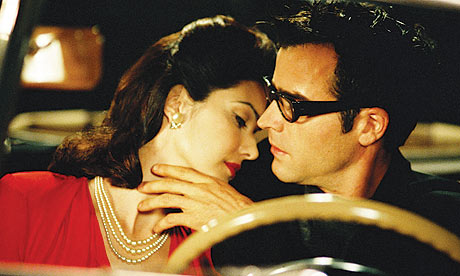
"Mulholland Drive that's where I was going!” - (Rita, Mulholland Dr.)
Every story in Mulholland Drive has its role to play this is the quality of the film that makes postmodern and at the same time somewhat frustrating. We are shown enough of each character to establish our perception of a scenario and what that means to the story but the sign (i.e. what it means to us) is somewhat difficult to pinpoint at times. Reviewer Alison M observes:
“The lack of a narrative line and the fact that most scenes act more as independent vignettes lends to the notion of a decentered narrative. Many of the individual scenes would be able to stand alone and probably make more sense than they do within the frame of the film. This lack of a narrative line also supports the self-reflexive quality of the film, in that it showcases Lynch’s control in how he wishes the viewer to comprehend the film.” (Alison, 2008)The only ease one can feel as the film progresses is that you are in the care of David Lynch throughout and at the very least you will have a few new things to think about. Everything is carefully delivered, one even finds it interesting how self aware Lynch is of the industry from which he operates within. The blue box - a signifier, the key - a metaphor leading from a dream to an awakening but an awakening to what? Another dream within the screen i.e. the film itself.
List of Illustrations
Figure 1. Mulholland Drive Poster Art. (com) [Online image]. At: https://blogger.googleusercontent.com/img/b/R29vZ2xl/AVvXsEi-14RsXTypkxNiWbboU7N55_SwLKH_gFKN_fzhd9o8AfgvjfY8QGIij61wM_XAsfSRNfyUeQxwVsGLBoqISQSW243LyhVzb7HJVrfSPwCp5zo3E9r4XB_esZbZol36tuD8b9j_0eBJv4Q3/s1600/mulholland-drive-poster-_2.jpg (Accessed on: 21/10/12)
Figure 2. When you see the girl in the picture that was shown to you earlier today, you will say, "this is the girl" (com) [Online image]. At: http://img132.imageshack.us/img132/2263/2q1t0eb.png (Accessed on: 21/10/12)
Figure 3. I had a dream about this place (com) [Online image]. At: http://horrornews.net/wp-content/uploads/2012/05/Mulholland-Drive-2001-Movie-6.jpg (Accessed on: 21/10/12)
Figure 4. It'll be just like in the movies. Pretending to be somebody else (com) [Online image]. At: http://www.filmmakermagazine.com/issues/fall2001/features/images/dream2.jpg (Accessed on: 21/10/12)
Figure 5. Mulholland Drive that's where I was going! (com) [Online image]. At: http://static.guim.co.uk/sys-images/Film/Pix/pictures/2010/4/16/1271411569849/Mulholland-Drive-directed-001.jpg (Accessed on: 21/10/12)
Bibliography
Freud, Sigmund. (1900) The Interpretation of Dreams, Penguin Classics, 3rd Edition (Accessed on: 21/10/12)
Brewer, Robert. (2002) Postmodernism What you should know and do about it, 2nd Edition (Accessed on: 21/10/12)
Woods, Tim. (1999) Beginning Postmodernism 3rd Edition (Accessed on: 21/10/12)
M, Alison. (2008) What makes Mulholland Drive Postmodern? At: http://b-ratemoviesarebest.blogspot.co.uk/2008/02/what-makes-mulholland-drive-postmodern.html (Accessed on: 21/10/12)
Saturday, 20 October 2012
Postmodernism: Research & Ideas - Kick-Ass
Questions I have asked myself in Regard to Postmodernism Vs. Kickass
It makes sense to think of the atypical
theme of the super hero archetype and find ways in which that it can be
deconstructed so that certain rules may be broken to create something different
entirely.
·
Who says super heroes have
to be perfect (Modern)?
·
Who says that they wouldn't
get their hands dirty?
·
Who says getting the crap
beaten out of you isn't a super power?
·
Who says you need special
powers to be a hero?
·
Who says heroes have to be
a certain age?
·
Who says heroes are not
just vigilantes?
The Modern Hero
Vs. The Postmodern Hero
The justification of violence in such a grotesque
manor makes Kick ass feel like a cartoon - completely unreal while at the same
time providing justification for heroic pursuits even if misguided or
completely futile. It is not morally wrong to stop a mugging (Kick Ass
Approach) but to slice the muggers arm off during a mugging pushes the boat out
a little too far, at least in terms of modernism (Big Daddy & Hit Girl
Approach).
What is a
hero? What is a Vigilante? Is it Morality?
The atypical classic hero does not meme or kill, he
beats up and arrests. Dave Lizewski aka Kick ass (played by Aaron Johnson) is a
visage of the classic comic hero (albeit with no powers) at least initially
displaying heroic traits from saving cats from trees to protecting the innocent
(albeit futile), he is not a killer.
Big Daddy & Hit Girl (Nicholas Cage & Chloe
Grace Moretz) redefine Kickass by bringing the themes of the vigilante into the
debate of right vs. wrong (good vs. evil). By doing this director Matthew
Vaughn has a perfect vessel for actively comparing the motives of the modern
super hero to the post modern vigilante. Charlie Jane Anders of the io9 Movie
Review observes:
"Superheroes don't give us much
in the way of lessons about morality, or science, or whatever — they give us a
context in which violence makes sense. Much like gangsters, who are the other
type of non-regular people we meet in this film. You could just as easily beat
people up without wearing a funny costume or being a gangster, but then it
would just be senseless assault. The superhero genre legitimizes our love of
brutality. And our masochism, as I may have mentioned". (Anders: 2012)
Is Kick-Ass a
story about heroes or Vigilantes'?
Even the vessel for the vigilantes
delivery (Big Daddy) is an open mockery of the classic Batman theme openly transforming
the 1960s metaphor into Batman's current vigilante theme - ala Christopher
Nolan's "The Dark Knight". Why
is it acceptable? We are a nation who love to see a super hero fall and pick
himself back up against all odds, Kick Ass is just trying to show what it is to
be a real life hero even if its delivery leaves us wiping our eyes in
disbelief. One almost feels invigorated seeing Dave Lizewski as he wipes the
blood from his face in the mirror after another beating really making one think
to themselves now that's what a hero really is. or is it?
Of course you still have sceptics who see Kick Ass devoid of its mockery of super heroes, seeing the change not as a new experience but as a desecration of the modern super hero. I.E. The gruesome nature, not to arrest but kill in a blood thirst rage with the use of a child as a killing machine. Roger Ebert of Rogerebert.com observes:
The Negative
- Mindless Killing
"This movie regards human
beings like video-game targets. Kill one, and you score. They're dead, you win". (Ebert: 2010)
On one hand you could agree with Eberts point there is
even a particular section in the film where we flip to a first person view no
doubt derived from ever popular video games culture such as "Call of Duty"
& "Halo". Still I would like to argue that throughout regardless
of right and wrong you still want the "Good Guy" to defeat the
"Bad Guy". This is probably liken to Anders Point above, just simply
stating because you know they are meant to be super heroes you can justify its
controversy. Still the reason could just be that the film is so self aware that
despite being completely whacky it is on some level reminding us of the real
life hardened criminals (bullying turned
knife crime, gang violence, etc). Jesse M observes:
Like
Watchmen, Kick-Ass tries to construct a comic book universe that’s highly
self-aware, wrapping it in some conventions that move toward realism (brutality,
references to current events, the cynicism of the first half), and in other
conventions that intentionally move toward self-conscious stylization (the
video game sequence? WTF?) If it sounds non-committal, that’s because it is. (Jesse: 2010)
Overview
Kickass is a downright mockery of the super hero theme
from its textile references to comic icons such as Spiderman & Batman. The
costumes are bright and in your face reflecting nothing fantastical or magic like
the modern iconic hero but more like cost-cut costumes from a Halloween store for
fancy dress, with concealed body armor and an arsenal of fire power. There is
an almost abnormal amount of blood and pain which almost seems to dig to the
depths of a real vigilante, it is not pretty because it is what it is... The postmodern
hero is not picturesque, he does not aspire to do good, he just aspires to stop
bad... he does not have identity because he is every man.
Online
Research:
Postmodern
Blog - Essay 1 - Kick-Ass
http://neilpowispostmodernism.blogspot.co.uk/2011/05/essay-1.html
http://neilpowispostmodernism.blogspot.co.uk/2011/05/essay-1.html
io9 Movie
Review - Kick-Ass
http://io9.com/5518464/kick+ass-knows-superhero-fans-are-masochists
http://io9.com/5518464/kick+ass-knows-superhero-fans-are-masochists
Yahoo Voices Kick-Ass:
Postmodern Superheroes
http://voices.yahoo.com/kick-ass-postmodern-superheroes-bloody-action-major-5840744.html
http://voices.yahoo.com/kick-ass-postmodern-superheroes-bloody-action-major-5840744.html
Roger Ebert
Review - Kick-Ass
http://rogerebert.suntimes.com/apps/pbcs.dll/article?AID=/20100414/REVIEWS/100419986
http://rogerebert.suntimes.com/apps/pbcs.dll/article?AID=/20100414/REVIEWS/100419986
Kick-Ass
changes comic book films forever in a single blow
http://www.guardian.co.uk/film/2010/mar/26/kick-ass-comics-film-adaptations
http://www.guardian.co.uk/film/2010/mar/26/kick-ass-comics-film-adaptations
Kick-Ass as
Postmodern Dilemma
http://mubi.com/topics/kick-ass-as-postmodern-dilemma?page=1
http://mubi.com/topics/kick-ass-as-postmodern-dilemma?page=1
Movie Review:
Kick-Ass
http://blogcritics.org/video/article/movie-review-kick-ass1/
http://blogcritics.org/video/article/movie-review-kick-ass1/
The Rubicon
Blog - Postmodern Parables
http://therubicon.org/2010/06/postmodern-parables-2/
http://therubicon.org/2010/06/postmodern-parables-2/
Unit 7: Narrative - Introduction to Mudbox Weeks 3 & 4
Hello Everyone,
This is the first of many updates today, I meant to post some of these sooner but I got caught up with a few other little things but never the less I am gradually getting back on track here. This and last week for Mud box had us looking into texturing with diffuse, normal, bump & specular mapping which would inevitably lead us down the path of displacement mapping (i.e. projecting High resolution details onto low polygonal meshes).
The latter is something I have been looking to find out for quite a time and now that I do I will be working on this for our short... which is greatly underway over at Smokestack ;)
The images above if you look closely have subtle blemishes such as paws and stubble the scar is the star item of my displacement map however. I made this just to see how it would bake into a lower poly mesh without causing too much of a dilemma. Creating effects like this is reasonably easy due to the mesh already having UV Coordinates.
The mesh is still quite high resolution but I can safely say that there are no polygons dedicated to creating the scar indent... it is entirely map orientated using displacement as opposed to bumps.
The video above shows the paint layers of the mesh one diffuse, one spec and one normal. I removed the bump maps and incorporated them into my normal map when I discovered there was no easy way to combine more then one bump map. However at this stage it was converting into Maya rather effectively (see below).
Above is the result from the Mental Ray Renderer in Maya 2013 I placed a small spotlight and just upped the drop off to get some decent fade. I also noticed the Incandescence was turned up so I removed that to keep the natural black of the background.
When you get closer you can notice the bumps of the mesh, from this distance you can also see the shine of my specular map. I'm glad I did these tests just to get the Software clear in my head. It also helped to navigate how to get the maps from one software suite to the other. A task which I found rather difficult earlier on.
Above is a screen shot across my dual screen setup, mud box is to the right, Maya is to the left and in the middle is the render from Maya using Mental Ray. Its quite cool how you can just jump between the 2, a feature I have come to appreciate where texture mapping is concerned. I have also learnt the hard way that being bringing the maps in and linking it all up yourself (not recommended).
I began this series of Mud Box lessons with a bit of a depreciation for Mud Box especially with suites like ZBrush out there which make the digital sculpting arena a breeze. However I have found the texturing to be more intuitive in Mud box where you paint your own maps (any and all) directly onto your model. Things just smooth better then when you are trying to polypaint specular and other stuff in ZBrush (which tends to leave hard lines when crossing material shaders).
Anyway until next week Mud Box.
Over & Out,
xXStItChXx
This is the first of many updates today, I meant to post some of these sooner but I got caught up with a few other little things but never the less I am gradually getting back on track here. This and last week for Mud box had us looking into texturing with diffuse, normal, bump & specular mapping which would inevitably lead us down the path of displacement mapping (i.e. projecting High resolution details onto low polygonal meshes).
The latter is something I have been looking to find out for quite a time and now that I do I will be working on this for our short... which is greatly underway over at Smokestack ;)
The images above if you look closely have subtle blemishes such as paws and stubble the scar is the star item of my displacement map however. I made this just to see how it would bake into a lower poly mesh without causing too much of a dilemma. Creating effects like this is reasonably easy due to the mesh already having UV Coordinates.
The mesh is still quite high resolution but I can safely say that there are no polygons dedicated to creating the scar indent... it is entirely map orientated using displacement as opposed to bumps.
The video above shows the paint layers of the mesh one diffuse, one spec and one normal. I removed the bump maps and incorporated them into my normal map when I discovered there was no easy way to combine more then one bump map. However at this stage it was converting into Maya rather effectively (see below).
Above is the result from the Mental Ray Renderer in Maya 2013 I placed a small spotlight and just upped the drop off to get some decent fade. I also noticed the Incandescence was turned up so I removed that to keep the natural black of the background.
When you get closer you can notice the bumps of the mesh, from this distance you can also see the shine of my specular map. I'm glad I did these tests just to get the Software clear in my head. It also helped to navigate how to get the maps from one software suite to the other. A task which I found rather difficult earlier on.
Above is a screen shot across my dual screen setup, mud box is to the right, Maya is to the left and in the middle is the render from Maya using Mental Ray. Its quite cool how you can just jump between the 2, a feature I have come to appreciate where texture mapping is concerned. I have also learnt the hard way that being bringing the maps in and linking it all up yourself (not recommended).
I began this series of Mud Box lessons with a bit of a depreciation for Mud Box especially with suites like ZBrush out there which make the digital sculpting arena a breeze. However I have found the texturing to be more intuitive in Mud box where you paint your own maps (any and all) directly onto your model. Things just smooth better then when you are trying to polypaint specular and other stuff in ZBrush (which tends to leave hard lines when crossing material shaders).
Anyway until next week Mud Box.
Over & Out,
xXStItChXx
Wednesday, 17 October 2012
Unit 7: Narrative - Review - Christopher Nolan's Inception

Figure 1. Inception Poster Art
It is fair to say that Inception has many underpinnings yes on one hand we are looking at the interpretations of dreams. However what one tends to toy with after the first watch is whether or not the film itself was the actual dream. Before one can even contemplate answering that question they are forced to look at themselves and ask who am i?
•Directed by: Christopher Nolan
•Written by: Christopher Nolan
•Cast: Leonardo DiCaprio as Cobb, Ken Watanabe as Saito, Joseph Gordon-Levitt as Arthur, Ellen Page as Ariadne, Marion Cotillard as Mal & Tom Hardy as Eames
•Genre: Drama, Action & Adventure, Mystery, Suspense, Science Fiction & Fantasy
•Duration: 148 Minutes (aprox)

Figure 2. "You create the world of the dream” - (Cobb, Inception)
The viewer is rather quickly slung into the midst of a dream with Cobb and his trusty companion Arthur in a rather dire situation of trying to perform the feat of "Inception" planting a seed (or idea) in a person's brain while they are in a dream state, ultimately tricking their mind to believe an idea they had was their own when it was in fact planted. Everything screams perfection in terms of architecture , mostly pristine with classy decor. It is quite easy to consider as the story is relayed and even makes sense to a certain degree, however it is not without its madness. Loss Angeles reviewer Kenneth Turan observes:
For "Inception" is not only about the dream state, it often plays on screen in a dreamlike way, which means that it has the gift of being easier to follow than to explain. Specifics of the plot can be difficult to pin down, especially at first, and guessing moment to moment what will be happening next, or even if the characters are in a dream or in reality, is not always possible." (Turan: 2010)Probably what makes Inception a certain treat is its downfall specifically when one considers the post modern. We are lead to believe throughout the films duration that ultimately there is no singular truth there are only many truths, there is no discernible overlord of logic there are many states of reason as we jump from one hosts dream to another. The dreams function as layers which change depending on the dreamers unconscious and the deeper the mind goes it has to return to each layer and exit securely to avoid limbo (or in reality a coma). What Nolan has created here is a quest into the topic of fiction (dreams) to create Inception (ideas) to ultimately influence reality.

Figure 3. "We bring the subject into that dream and fill it with their subconscious” - (Cobb, Inception)
One could go further to say that what Nolan has created here is a rather careful glance at his own personal point of view into the film category, a category he displays to us while we watch and wait for definitive answers that simply do not exist. Everything Nolan incorporates has in some way been influenced onto him from something in his past, this is clearly shown in the character Cobb (played by Decaprio) who drags his estranged wife to every dream, a looming husk resembling only his guilt for her tragic demise. Unable to get past her Cobb cannot see past his demons believing them to be real in every fictitious sense of reality. Reviewer J Brady posted the following on Inception and Postmodernism:
“In this case, Cobb, who breaks into people’s dreams, represents the director. Arthur (Joseph Gordon-Levitt), who is the researcher, represents the producer who sets everything up. Ariadne (Ellen Page), the architect, represents the screenwriter who creates the world that the dreamer will enter. Eames (Tom Hardy), referred to as the forger, represents the actor, who assumes the form of other people in the dream world. Yusuf (Dileep Rao), the chemist, is the technical guy who furnishes the chemicals necessary to create the shared dream state. I would go even further to say that Yusuf is the cinematographer – where the camera is the dream-sharing “apparatus” and the sedatives used to facilitate the dreaming could be considered the actual film in the camera.” (Brady: 2011)Taking Bradys comment into consideration let us examine a specific moment in Inception: Cobb sits down with Robert Fischer (the dreamer he is to perform inception on) and convinces him that he is trying to protect him when he is in fact the foreign invader. This is no different than a directors decision on set telling a paying audience later don't believe them believe this person through suggestion acting ever so discretely as our subconscious. The same instance can be considered to any of the "roles" mentioned above by Brady. At this point one could even question if we could trust in the reliability of any of the actual on screen cast in Inception when they could be hijacking our dreams right now leading us to trust one of their "Invader Nolans", discretely telling you to buy Inception on DVD and as luck would have it... you do.

Figure 4. "Your subconscious is looking for the dreamer” - (Arthur, Inception)
The projections are another thing entirely consisting of Inceptions version of "Agents" (The Matrix, 1999) "they are everyone and they are no one" (Morpheus). We do not trust them and yet we have to because on some level they are us with a primal need - survival. Still what flutters a little bit is how these worlds function when a person's mind is unconscious, shifting antagonists the deeper the invader goes advancing forward as if in some uncanny video game template. The unconscious is no longer a second realm in its own right it is in fact a complete duplication of the conscious. Dan Jardine of Cinemania observes:
Inception treats the unconscious as even more than working in tandem with the conscious. The film presents the unconscious as nothing other than a replication of the conscious, a mechanical template that adheres to the same rational rules of motion, freaky-deaky surreal special effects notwithstanding. With this in place, an infinite number of templates may be cast in the service of the plot, but the result is a bogus technologization of the mind that reduces it to the levels of a video game." (Jardine: 2012)For a dream state to be so neatly constructed one cannot help but find some truth to Jardines opinion, in the dream world anything can happen and would not be so neatly constructed to form a plot. Most dreams are fragments, it would probably be more believable if the action inside the dreams was more erratic (e.g. because it's a dream who says gravity exists?). Who says that this brain dreams the same as someone else's . This could be a rather clever or idiotic notion for Nolan to project to the viewer. On one hand he is saying that when Cobb and his team invade a dream they are bound by that persons rules one of which could be gravity (this is an example of modernism), however on the other he is saying that certain parts of the invaders subconscious bleed through (I.e. Mal - Post modernism) so therefore who's to say that any particular part of our subconscious would bleed through not just the same projection (in Cobs case Mal). Cobb brought a team of people and they have dreams why would the dream not be filled with numerous random encounters way more vast then freight trains?

"You're waiting for a train, a train that will take you far away. You know where you hope this train will take you, but you don't know for sure. But it doesn't matter. How can it not matter to you where that train will take you?” - (Mal, Inception)
While the point above is valid there is no doubt that Nolan has created something that really reflects the director and the viewer and the viewers view of that director and that directors view of the film to the viewer. Inception is not only the study of dreams it is more importantly a study of the mind, the study of perception, it tells us there is no definitive rule or logic, the world is what we as individuals make it and we fill it with our interpretation in everything that we do. The Last Psychiatrist of Lastpsychiatrist.com observes:
“Inception is the exact opposite. It doesn't matter whether you think it's all a dream, or just some of it, or it's actually someone else's dream, or it's all real. The main point-- and Nolan makes it twice-- is that you can't hide from yourself.” (The Last Psychiatrist, 2010)The truth is the individuals perception (the dreamer) is just that, theirs alone. They will dream about what they are thinking about conscious or subconsciously. Who's to say that there is a world constructed or maybe there wasn't. Who's to say you can die in a dream (because it's usually followed with you waking up). The dream is about you regardless of logic, you are its director, actor, camera man, you are everyone. There is no place to hide from yourself in a dream state because it's all constructed by you unconsciously, it's how something affected you, changed you or made you what you are.
List of Illustrations
Figure 1. Inception Poster Art. (com) [Online image]. At:
http://thedreamofpixar.files.wordpress.com/2011/02/inception-movie.jpg
(Accessed on: 18/10/12)
Figure 2. You create the world of the dream (com) [Online image]. At: http://t.fod4.com/t/617fb5a77d/c480x270_46.jpg
(Accessed on: 18/10/12)
Figure 3. We bring the subject into that dream and fill it with their subconscious
(com) [Online image]. At: http://joe-perez.com/blog/wp-content/uploads/2011/07/inception-cobb-and-fischer.jpg
(Accessed on: 18/10/12)
Figure 4. Your subconscious is looking for the dreamer (com) [Online image]. At: https://blogger.googleusercontent.com/img/b/R29vZ2xl/AVvXsEhS7jcnUq6d0W0OIXeJ7ody13jpgAA1_QjLL4pWpyz2FFBEEuOlyceA-kzhrbQmOtDMMOBecxdS4NcFuupbiq6WzndjTTVTDtsPUceT9jLCZnHS9fuRatVyqIlgiA3C94UlCaBtZb6cTDo/s1600/inception-hotelroom.jpg
(Accessed on: 18/10/12)
Figure 5. You're waiting for a train, a train that will take you far away. You know where you hope this train will take you, but you don't know for sure. But it doesn't matter. How can it not matter to you where that train will take you? (com) [Online image]. At: http://fc06.deviantart.net/fs70/i/2012/169/2/b/you_create_the_world_of_the_dream_by_esseti-d53x4u2.jpg
(Accessed on: 18/10/12)
Bibliography
Turan, Kenneth. (2010) Movie Review: Inception At:
http://articles.latimes.com/2010/jul/16/entertainment/la-et-inception-20100716
(Accessed on: 18/10/12)
Brady, J. (2011) Postmodernism At:
http://jbrady-postmodernism.blogspot.co.uk/2011/02/ideas-on-inception-and-work-of-art-in.html
(Accessed on: 18/10/12)
Jardine, Dan. (2012) Inception Review At:
http://djardine.blogspot.ca/2012/07/inception-usa-2010-christopher-nolan.html
(Accessed on: 18/10/12)
The Last Psychiatrist. (2010) Inception Explanation At:
http://thelastpsychiatrist.com/2010/07/inception_spoilers.html
(Accessed on: 18/10/12)
Subscribe to:
Posts (Atom)






